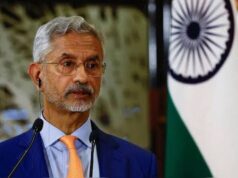India to ensure 70% self sufficiency in oil for Mongolia by 2025

Prime Minister Modi had made a historic visit to Mongolia in 2015. The two governments had signed an agreement to establish the first oil refinery in Mongolia. This refinery project is now under full swing comprising four phases.
The first phase, has crossed more than 70% completion and will be done within this year. The remaining three phases have gone through the tender process. Megha Engineering and Infrastructures Limited, a Hyderabad- based company, has been selected. The refinery will provide a lot of self sufficiency and energy security to Mongolia.
Mongolia’s first oil refinery, built and funded with Indian assistance, will be completed by 2025, acknowledged the country’s Ambassador Dambajav Ganbold. In an interview, Ganbold said the first stage of Mongol Oil Refinery, built with aaINR 9900 crores Indian soft loan, will be completed at the end of this year.
Presently Mongolia is entirely dependent on Russia for its energy imports. The refinery, would help Mongolia meet 70% of its demand domestically. Mongolia also hopes to attract Indian investment in its mining and metals, with plans to start shipping coking coal to India by 2024.
Mongolia also has key rare earth metals, which may be crucial to India’s ambitions to build cutting edge technological capabilities in semiconductors and green mobility.
Indian firms have already visited Mongolia to explore these opportunities. In order to facilitate these exchanges, Mongolia and India are expected to establish regular direct flights. The Ambassador said that India is one of our important “third neighbours” in this region.
This is one of the important concepts of our foreign policy and it came up originally because we have two big neighbours: Russia and China. So, for Mongolia’s independence as a state, we need third neighbour contact, which gives us an opportunity to develop and broaden our cooperation not only in the region, but in the international arena.
Both Countries have had talks about developing the Mongolian mining sector because it is quite rich in coking coal, copper, gold, uranium and rare earth elements. Mongolian will start exporting coking coal to India after building a washing station for the coking coal, and as soon as it is done by 2024, exports will start to India.
Mongolia has huge deposits of rare earth elements. Indian investors are likely to build joint ventures in Mongolia since the Indian government announced that it will produce semiconductors domestically and not import them from China. One major Indian company is already there in Mongolia for meetings and discussions.
A lot of issues are under discussion for energy cooperation between Mongolia and India which will be very beneficial to both. Mongolia is four times the size of France and has a population only 3.4 million with lots of open empty land.
It also has more than 270 days of sun in a year. So that solar renewable energy can be a beneficial area of cooperation. Wind energy and hydroelectricity are also of interest. Conversations with the Indian government on joint projects are in very early stages.
Both the countries are working now to establish direct flights between Mongolia and India. With direct flights, it will be easy for business people to connect to each other. By end of this year, there will be regular flights twice per month.
There is also a big development in defence cooperation. Last September, Defence Minister Rajnath Singh visited Mongolia and their Defence Minister attended Defence Expo in India in October last year.
At the beginning of this year, Mongolia’s State Secretary of Defence visited India for the Aero India in Bangalore. Cooperation in the defence sector will also cover the infrastructure construction as well. Last month, the chief of the Border Security Force of India, was invited to visit Mongolia this July.
Tourism is going to be another area of cooperation. For many Mongolians, India is the land of the Buddha. Cooperation in agriculture sector also offers opportunities. There is a huge amount of land untapped in Mongolia.
With Indian expertise in cultivation they can grow many varieties of crops in Mongolia. On education, the Indian government is giving 50 scholarships per year for college students from Mongolia.
On the medical side, medical cooperation can be very interesting because there are a lot of Mongolians coming to India for medical tourism. Indian medical health centers are being invited to Mongolia.
Last year, a representative from Max Hospitals visited Mongolia and now this year, some more Indian health institutions are to visit Mongolia to explore possibilities for cooperation. This would include setting up facilities, research and training among other things.




